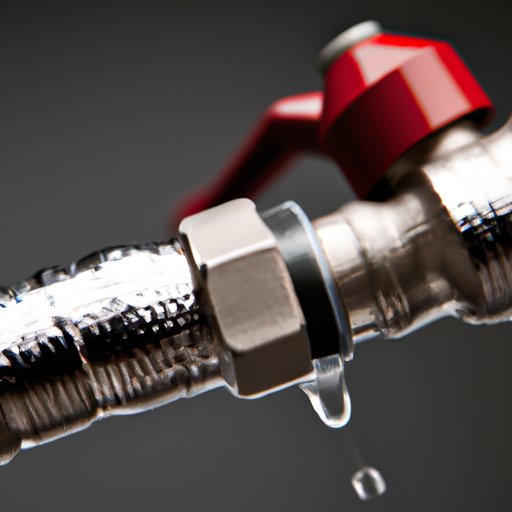Introduction
Water pressure is a crucial component of modern daily life and tasks. Whether taking a shower, washing the dishes, doing laundry, or watering plants, we rely on water pressure to function efficiently. However, when water pressure issues arise, they can quickly become major sources of inconvenience and frustration. To understand how water pressure works and how to troubleshoot common problems, this article provides an overview of its physics, principles, and practical solutions.
An Overview of How Water Pressure Works: Understanding the Basics
Water pressure, in simple terms, refers to the force of water pushing against the walls of pipes and fixtures. This force enables water to flow through them and reach its destination. Water flow, in turn, determines water pressure. The faster the water flows, the higher the pressure, and vice versa. Various factors can affect water pressure, such as the elevation and height of pipes, distance from the source, and the number of fixtures drawing water from the same line.
Exploring the Physics behind Water Pressure: What Causes It, and How It’s Measured
Water pressure is a direct result of the principles of fluid dynamics. In other words, water behaves in response to changes in pressure, volume, and velocity. The three most common units for measuring water pressure are pounds per square inch (PSI), atmospheres (ATM), and bars. Measuring water pressure is essential for diagnosing plumbing issues and determining the appropriate solutions. Static pressure refers to the pressure when the water is not flowing, while dynamic pressure pertains to water pressure when it’s flowing.
How to Troubleshoot Water Pressure Problems in Your Home: Tips and Tricks
Low water pressure is one of the most common issues homeowners face, and it can stem from several sources. Identifying the source of the issue is crucial to determine the appropriate solution. Problems may arise from clogged aerators, leaks, poorly designed plumbing systems, or municipal water supply issues. High water pressure is also problematic, as it can lead to burst pipes and damage fixtures. Diagnosing the issue and identifying the appropriate solution can save time and money.
Boosting Water Pressure: What Are the Options, and Which One to Choose?
Various methods can improve water pressure in homes, from installing a pressure booster to upgrading plumbing systems and fixtures. Understanding the unique needs of the property and matching them with the most appropriate solution is essential to maximize efficacy and savings. Some potential solutions include installing pressure-boosting pumps, replacing old pipes, and fixtures, or installing a water pressure regulator.
The Benefits of Maintaining Proper Water Pressure: Why Low Pressure Is Not Just an Inconvenience
The impact of low water pressure extends beyond inconvenience and discomfort. Low water pressure can damage appliances, reduce water efficiency, and cause backups or clogging. Proper maintenance of water pressure helps conserve water, reduce waste, and save energy and maintenance costs in the long run. By optimizing water usage and reducing waste, households can contribute to a greener environment and reduce their carbon footprint.
The Impact of Water Pressure on Energy Bills: Ways to Save Money and Resources
Water pressure plays a crucial role in energy consumption and household bills. Reducing water usage and optimizing water pressure can reduce energy consumption and save money as a result. Making conscious choices about water usage, such as taking shorter showers or using water-efficient fixtures, can create significant savings over time.
Conclusion
Understanding how water pressure works and how to troubleshoot, maintain, and boost it is essential for efficient and cost-effective water usage in households. Diagnosing and addressing potential issues promptly can save money and resources in the long run, contributing to a more sustainable environment. By matching unique needs with appropriate solutions, households can improve their quality of life while reducing their environmental impact.
(Note: Is this article not meeting your expectations? Do you have knowledge or insights to share? Unlock new opportunities and expand your reach by joining our authors team. Click Registration to join us and share your expertise with our readers.)
